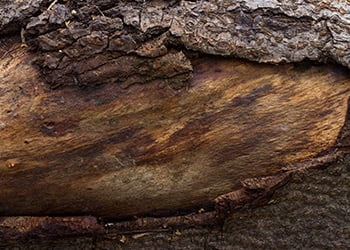Extreme weather events such as severe storms, flooding or drought can cause widespread damage and destruction to our homes, properties and wider communities. Our trees can also become collateral damage amidst the chaos and may require emergency tree care to keep them alive or to prevent further damage. Doing the ‘right’ things once trees have been damaged can be the difference between giving your trees a chance at survival and losing them.
Here we take a look at what you can do to help your trees in the event of an emergency.
1. Assess The Damage

Step one is to assess the damage but your safety must be top of mind. Fallen power lines are extremely dangerous and should only be handled by a professional so steer clear if you find yourself in this situation.
Assess the damage. Are any of your trees leaning? Uprooted? Broken? Have any trees fallen over onto powerlines? Have they fallen onto something or are they obstructing access to the property? Trees that are dead, have dead or diseased limbs or that are structurally weak pose a huge risk to both people and property, so do not, under any circumstances put yourself in harm’s way or attempt to remove a tree yourself if there is any danger.
Depending on your circumstances, you may need to call emergency services, but for any tree work, call your local Arborist immediately to do a full assessment and advise the best course of action for everyone’s safety and the health of the tree.
2. Priority Tree Care
Once the full assessment has been carried out, the care of the impacted trees needs to be prioritised. Any trees that could pose immediate risk to safety such as those that are now leaning towards powerlines, roads or buildings should be prioritised. Quick action is required to mitigate potential risk and damage.
Attention should then be given to large or mature trees as they may have a higher risk of structural damage. If you have an uprooted tree your Arborist may be able to replant it and give it another chance but it must be done quickly and be given the appropriate support and staking to help the tree re-establish its root system and become stable once again.
3. Uprooted Trees

Uprooted trees are quite common in extreme weather events. If you have an uprooted tree your Arborist may be able to replant it and give it another chance but it must be done quickly for the tree to have a chance at survival. The Arborist will more than likely need to trim damaged roots, prune the canopy and use appropriate support and staking to help the tree re-establish its root system and become stable once again.
4. Broken Limbs And Branches
Trees that have broken branches and limbs will require careful pruning to prevent further damage and to encourage healthy regrowth. Damaged portions need to be removed ideally without impacting the tree’s overall structural integrity. Your Arborist will use specialty tools and equipment to reach high branches and make precise cuts whilst minimising stress on the tree. Correct pruning techniques will help the tree to recover, promote longevity and make it look its best. Resist the temptation however to over prune to make the tree look more even as this can adversely affect your tree
5. Repair Torn Bark

Any torn bark will need to be repaired or smoothed out as it can create the perfect hiding spot for pests and makes a great breeding ground for fungus. Try to do so without harming the green, inner bark of the tree as this is the layer that carries nutrients throughout the tree.
6. Disease Prevention
Exposure to extreme weather events can weaken trees, leaving them more susceptible to pests and disease. Preventative measures such as the application of fungicides, insecticides, and fertilisers can be used, however it is advisable to do so with the guidance of your Arborist.
Ongoing Tree Care And Maintenance
A healthy tree is a stronger tree, and is therefore more likely to withstand extreme conditions. To keep your trees strong and healthy, have them regularly inspected by a professional Arborist, only ever use the correct pruning techniques, water them when needed and use mulch. A bit of TLC goes a long way and it could be the difference between you having a major disaster on your hands in the next big storm or not.
Your local Arborist is there to help in an extreme weather event so use them! Don’t put yourself or your family at risk.
Work With Brisbane’s Aussie Tree Solutions

For the best in emergency storm damage response services speak to the team at Aussie Tree Solutions today.
We also provide a full range of tree care services, so whatever your issue, we have the solution! From tree pruning to tree removals, mulch, stump grinding and everything in between, we’ve got you covered.

